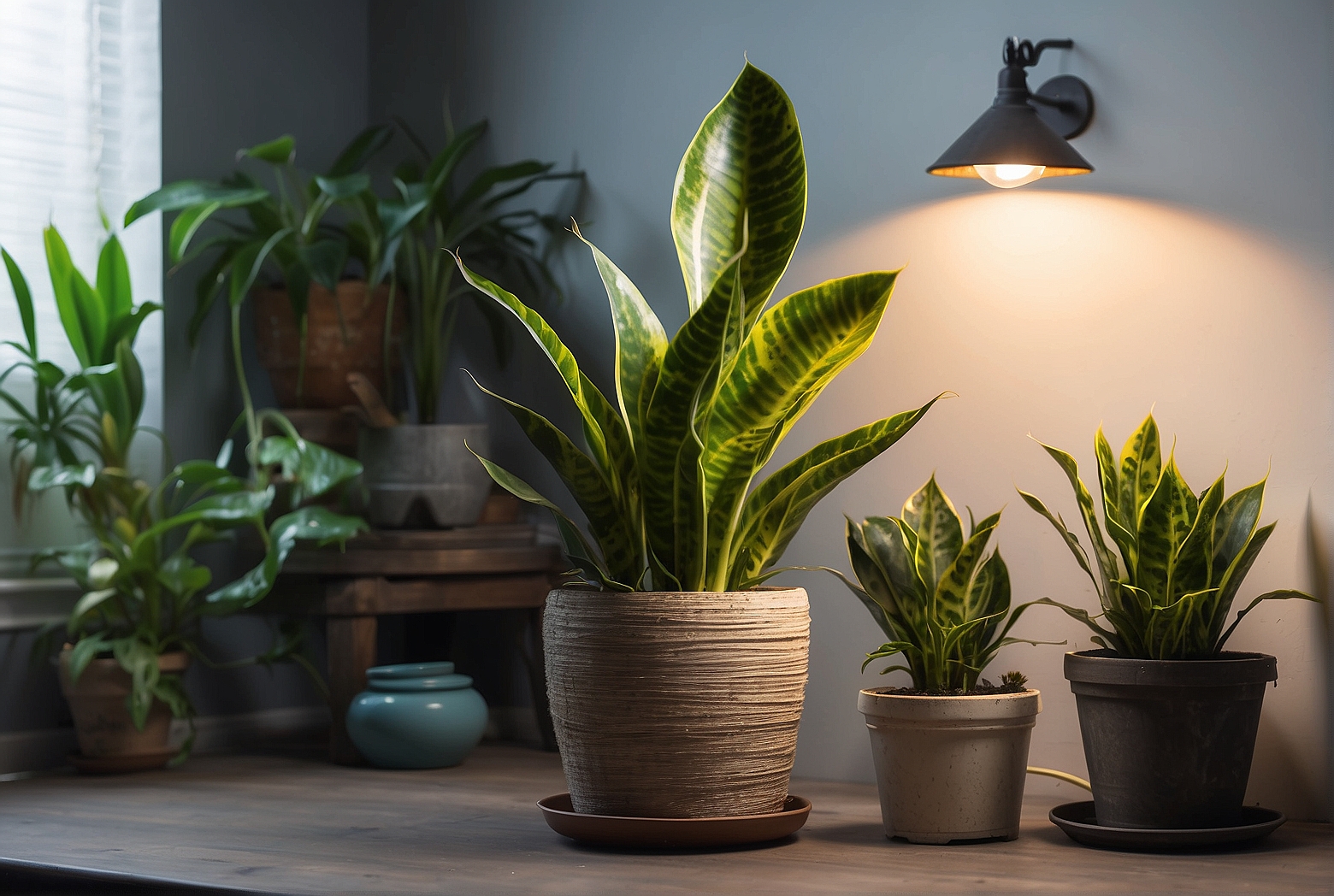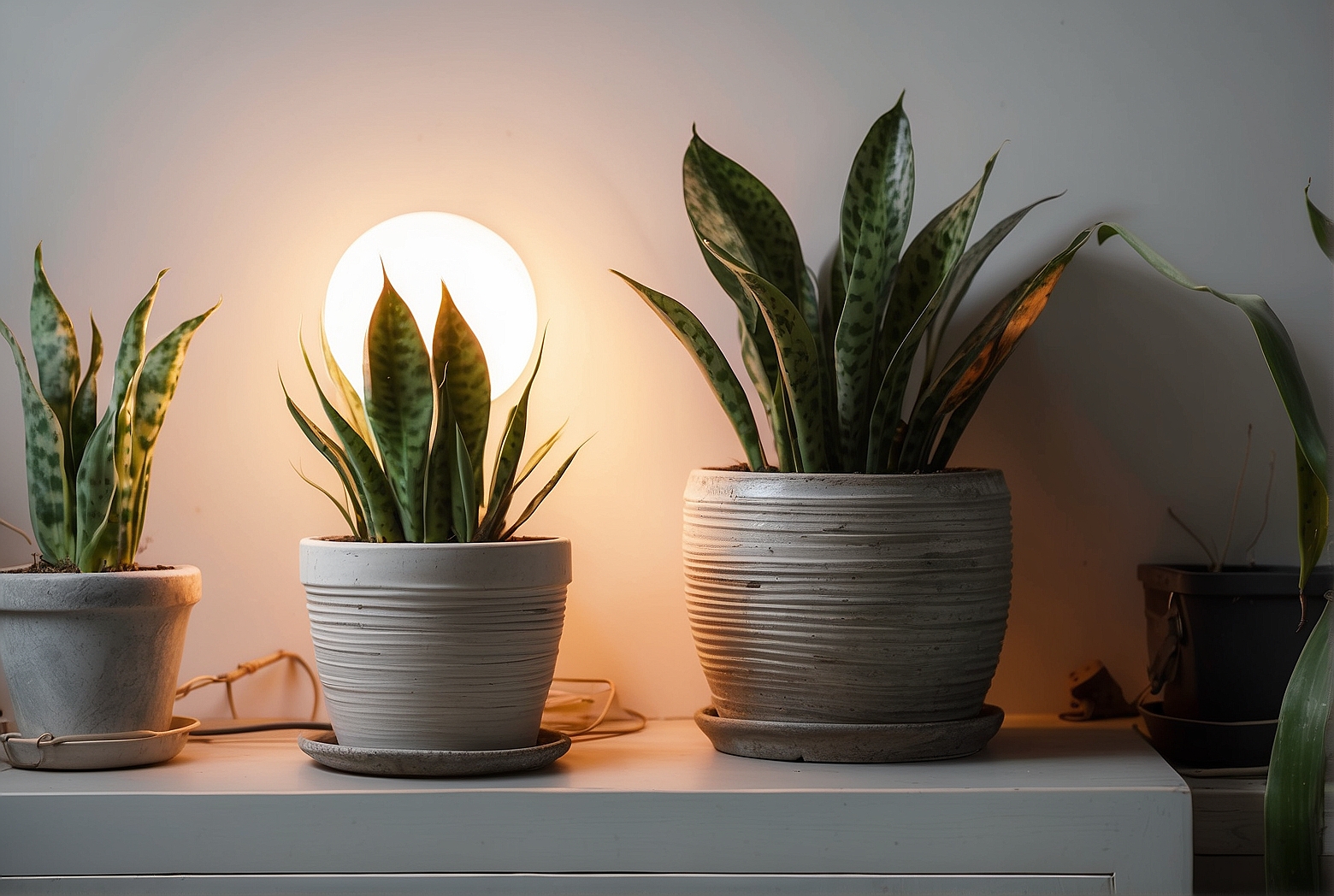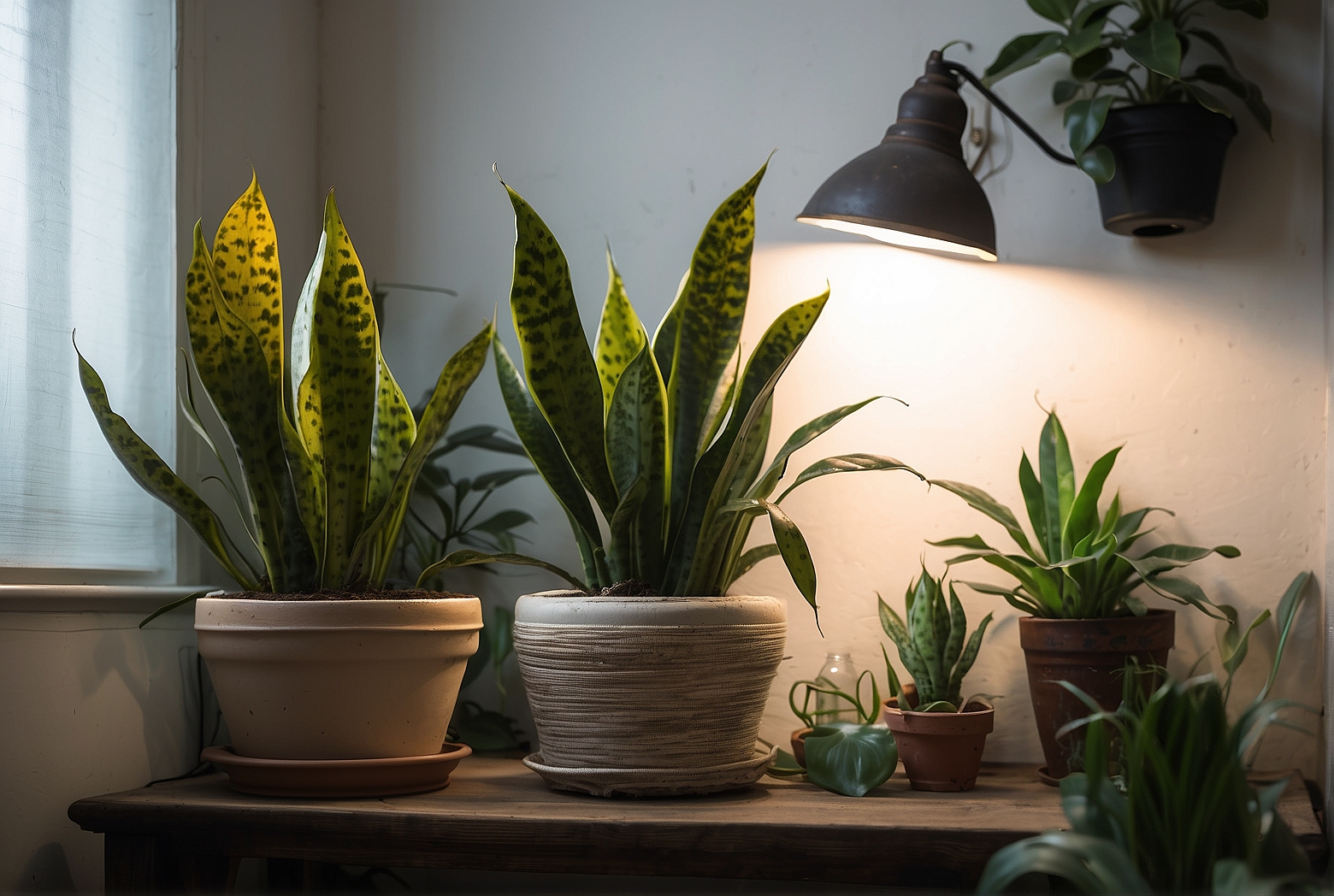Last Updated on April 10, 2024 by Tony Manhart
Are you a proud owner of a snake plant? Well, here’s some good news for you! The common question among plant enthusiasts is whether the snake plant needs light or not. This captivating article will provide you with all the information you need to know about the light requirements for this striking plant. From the ideal amount of light to how to position your snake plant for optimal growth, we’ve got you covered. So, sit back, relax, and let’s shed some light on this intriguing topic!
Understanding the Snake Plant
Introduction to the Snake Plant
The Snake Plant, also known as Sansevieria or Mother-in-law’s Tongue, is a popular houseplant known for its unique sword-like leaves and low maintenance requirements. This plant is native to West Africa and belongs to the family Asparagaceae. With its attractive appearance and numerous health benefits, the Snake Plant has become a favorite choice for both beginner and experienced plant enthusiasts.
Characteristics of the Snake Plant
The Snake Plant is characterized by its long, upright leaves that grow in a striking rosette pattern. These leaves are typically dark green, but some varieties may have yellow or variegated patterns. One of the most distinctive features of the Snake Plant is its ability to store water in its leaves, making it highly tolerant to drought conditions. This feature, along with its ability to survive in low light conditions, makes it an excellent choice for those who struggle with regular plant care.
Popular Varieties of Snake Plants
There are several popular varieties of Snake Plants available, each with its own unique characteristics. Some common varieties include the Sansevieria trifasciata, known for its dark green leaves with white or yellow bands, and the Sansevieria cylindrica, which has cylindrical leaves and can reach impressive heights. Other popular varieties include the Sansevieria moonshine, Sansevieria black coral, and Sansevieria golden hahnii. With such a wide range of options, there’s a Snake Plant variety to suit every plant lover’s taste.

Light Requirements for Snake Plants
Importance of Light for Plant Growth
Light is an essential component of a plant’s growth and plays a crucial role in its overall health. It is through the process of photosynthesis that plants convert light energy into chemical energy, which is then used to fuel their growth and development. Without sufficient light, plants will struggle to produce enough energy to carry out essential processes, resulting in stunted growth and a weakened immune system. Therefore, understanding the light requirements of Snake Plants is vital for their well-being.
Pythonium Sansevieria’s Light Preferences
The light preferences of Snake Plants vary depending on the species and variety. However, in general, Snake Plants thrive in bright, indirect light. While they can tolerate low light conditions, they do best when exposed to moderate to bright light for several hours a day. Some varieties, such as the Sansevieria trifasciata, can also tolerate direct sunlight for short periods, but prolonged exposure to intense sunlight can damage their leaves.
Influence of Light on Snake Plant’s Health
Proper light exposure has a significant impact on the health of Snake Plants. When exposed to optimal light conditions, Snake Plants are better equipped to carry out photosynthesis, resulting in robust growth and vibrant foliage. Adequate light also helps prevent issues such as root rot and fungal infections, as it promotes proper air circulation and encourages the plant’s natural defense mechanisms. Inadequate light, on the other hand, can lead to weakened plants, pale leaves, and overall poor growth.
Ideal Light Conditions for Optimal Growth
To ensure optimal growth and health for your Snake Plant, it is crucial to provide it with the right amount and type of light. Ideally, Snake Plants should be placed in bright, indirect light. This can be achieved by positioning them near a north or east-facing window, where they will receive bright but indirect sunlight. If a suitable window location is not available, artificial fluorescent lighting can also be used to provide the necessary light requirements. It is important to avoid placing Snake Plants in areas with direct, intense sunlight, as this can scorch their leaves and cause irreversible damage.

Indoor Lighting Considerations
Natural Light vs. Artificial Light
When it comes to providing light for indoor plants like Snake Plants, there are two primary options to consider: natural light and artificial light. Natural light refers to the sunlight that comes through windows or glass doors, while artificial light consists of light sources such as fluorescent or LED bulbs. Both natural and artificial light can be used successfully to meet the light requirements of Snake Plants, but each option has its advantages and considerations.
Placement of Snake Plants for Adequate Light
To ensure that your Snake Plant receives adequate light, proper placement is key. If utilizing natural light, placing the plant near a window or glass door that receives bright but indirect sunlight is ideal. East-facing windows are particularly suitable, as they provide gentle morning sunlight without the intense heat of afternoon sun. If using artificial light sources, ensure that the Snake Plant is situated within a few feet of the light fixture to maximize light exposure.
Monitoring Light Exposure Indoors
While Snake Plants can tolerate low light conditions, it is important to monitor their light exposure to ensure they receive adequate illumination. One easy way to assess the light intensity is to observe the shadows cast by the plant. If the shadows are distinct and well-defined, it indicates that the light levels are sufficient. However, if the shadows appear soft and blurry, it may suggest that the plant is not receiving enough light and may need to be moved to a brighter location or provided with artificial light supplementation.
Amount of Light for Snake Plants
Understanding Light Intensity Levels
Light intensity refers to the amount of light received by a plant, and it is measured in foot-candles or lux. Different plant species have varying light intensity requirements, and Snake Plants fall into the category of plants that can thrive in moderate to low light conditions. While they can tolerate light levels as low as 50-100 foot-candles, they perform best when exposed to light levels ranging from 150-1000 foot-candles. It is important to find the right balance to ensure optimal growth and health for your Snake Plant.
Balancing Light Intensity for Snake Plants
Finding the right balance of light intensity for your Snake Plant can be achieved through proper placement and monitoring. If your Snake Plant is positioned near a window, observe its response to the natural light. If the plant shows signs of stretching or leaning towards the light source, it may indicate insufficient light and the need to move it closer to the window. On the other hand, if the leaves start to turn yellow or brown, it may suggest excessive light exposure, and adjustments should be made accordingly.
Avoiding Excessive Sunlight Exposure
While Snake Plants can tolerate some direct sunlight, prolonged exposure to intense sunlight can lead to leaf burn and other sun-related damages. Signs of excessive sunlight exposure include scorch marks or brown patches on the leaves. To prevent these issues, it is crucial to protect your Snake Plant from harsh afternoon sun by using sheer curtains or relocating it to a spot where it receives bright, indirect light. By avoiding excessive sunlight exposure, you can ensure your Snake Plant remains healthy and thriving.
Dealing with Low Light Conditions
One of the reasons why Snake Plants are popular houseplants is their ability to tolerate low light conditions. However, prolonged exposure to low light can hinder their growth and vitality. If you find that your Snake Plant’s leaves are becoming pale or dull, it may be an indication of insufficient light exposure. In such cases, consider moving the plant closer to a well-lit area or providing supplemental artificial lighting to meet its light requirements.
Common Light-related Issues
Signs of Insufficient Light in Snake Plants
Effects of Too Much Light on Snake Plants
Burns and Other Sunlight Damage
Troubleshooting Light-related Problems
Caring for Snake Plants’ Light Needs
Choosing the Right Location for the Snake Plant
Rotating the Plant for Balanced Sunlight Exposure
Providing Indirect Sunlight
Supplemental Lighting Options
Adapting to Different Lighting Environments
Transitioning Snake Plants to New Lighting Conditions
Adjusting Light Intensity Gradually
Managing Light Changes during Seasonal Shifts
Additional Tips for Snake Plant Care
Watering Considerations
Soil and Potting Requirements
Temperature and Humidity Levels
Fertilizing Techniques
Propagation Methods
Common Pests and Diseases
Conclusion
Summary of Snake Plant’s Light Needs
Key Takeaways
Tony Manhart is a passionate gardener who has been tending to gardens for over 20 years. He takes pride in creating beautiful outdoor spaces with plants, trees, and shrubs that can thrive in any environment. He loves to share his knowledge with others and has taught classes on gardening basics and advanced techniques. He is committed to sustainability, using natural and organic methods to create and maintain gardens. He also works with local organizations to create green spaces for communities. When he’s not gardening, Tony enjoys hiking, reading, and spending time with his family.


